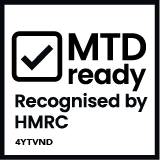If you’re a sole trader or landlord in the UK, you’ve probably heard of Making Tax Digital (MTD), the government initiative designed to simplify tax admin for businesses.
But, with various dates floating around (and extra delays introduced due to COVID and HMRC), it’s easy to get confused about when exactly you need to be using the new system.
In this guide, we’ll tell you everything you need to know about the Making Tax Digital deadlines, plus the answers to some FAQs about MTD.
Let’s jump in!
Why has MTD been introduced?
The idea behind Making Tax Digital is to make tax administration simpler and more streamlined for businesses, including freelancers. While it does add some extra tasks to your list, it should—in theory—make your life easier.
Under the new system, you’ll have to track all of your income and expenses throughout the tax year using accounting software that’s compatible with MTD. Then, when it comes to submitting an income tax return or VAT return, you’ll already have all the information you need, and will be able to do it in just a few clicks.
There’ll also be less room for error in your declarations, as you won’t be entering figures manually into HMRC’s system, or storing them in Excel spreadsheets that could easily be lost or corrupted. This could save you the hassle of having to correct records down the line after you’ve made a mistake—and even save you from penalties for incorrect declarations in extreme cases.
Plus, under MTD for Income Tax Self Assessment (ITSA), you’ll have to tell HMRC about your income and expenses four times a year, instead of one. While this adds a bit of extra work, it also means you’ll have an idea of the tax you owe throughout the year—so you won’t be caught out by an unexpectedly hefty tax bill in January.
When are the Making Tax Digital deadlines?
There are two main deadlines for Making Tax Digital that you need to know about as a freelancer:
- Making Tax Digital for VAT: the deadline for all VAT-registered businesses to sign up for MTD for VAT was 1st April 2022. This means that if you’re a freelancer that’s registered for VAT and you haven’t signed up yet, you’ll need to do so as soon as possible.
- Making Tax Digital for Income Tax: The deadline for MTD for Income Tax will be 6th April 2026, which means that freelancers have a bit more time to prepare. Although that might seem like the distant future, it’s a good idea to start preparing now by getting used to using accounting software to track your finances (so if you’re already using Coconut, you’re off to a good start!).
Your Making Tax Digital timeline
Making Tax Digital has gone through a lot of changes since it was first announced, way back in 2015. To help you understand everything that’s happened so far and what’s coming over the next few years, here’s a timeline of some of the most important dates:
- December 2015: The government publishes ‘Making Tax Digital’, its strategy for a new system of digital tax accounts for businesses, freelancers, and landlords.
- April 2019: Making Tax Digital for VAT comes into effect for VAT-registered businesses with a taxable turnover of over £85,000.
- April 2021: The soft-landing period for Making Tax Digital for VAT ends, meaning businesses can no longer copy and paste data into HMRC’s system.
- April 2022: Making Tax Digital for VAT becomes mandatory for all VAT-registered businesses, even those earning less than £85,000.
- April 2026: Making Tax Digital for Income Tax will become mandatory for sole traders and landlords earning over £50,000 per year.
- April 2027: Making Tax Digital for Income Tax will become mandatory for sole traders and landlords earning over £30,000 per year.
What was the soft landing period for Making Tax Digital?
During the first two years of Making Tax Digital for VAT, HMRC tolerated businesses copying and pasting figures into their digital VAT returns from another program, such as Excel. This was known as the soft landing period.
However, this period is now over, so you can no longer copy and paste this information. Instead, you need to use accounting software that allows you to transfer data electronically. This means that you can’t accidentally introduce errors when moving your info across.
What is Phase 2 of Making Tax Digital?
Phase 2 of MTD refers to the second phase of implementing MTD for VAT. When the system was launched in April 2019, only VAT-registered businesses with a taxable income over the VAT registration threshold of £85,000 per year had to use it.
This was expanded in April 2022, and it now applies to all businesses that are registered for VAT, regardless of income.
Is Making Tax Digital going to be delayed?
MTD for VAT is already mandatory for all VAT-registered businesses as of April 2022. Making Tax Digital for Income Tax was first due to come into effect in April 2023 but was delayed for a year due to the pandemic. In December 2022, HMRC announced that it would be delaying the introduction yet again, and that the first phase (affecting those with self-employment and property earnings of more than £50,000) will start in2026.
Is Making Tax Digital a legal requirement?
Yes—all businesses that are VAT-registered now have to use MTD for VAT to submit their VAT returns and keep digital records related to VAT.
MTD for Income Tax isn’t yet in effect, but once it’s rolled out in 2026, it will be obligatory for all sole traders and unincorporated landlords earning an annual income of £50,000 or more.
Do sole traders need to go digital?
Yes, MTD for ITSA will affect sole traders, partnerships, and those who make income from property, assuming you make at least £50,000 per year (£30,000 from 2027). Basically, anyone who is self-employed or who makes money from property but is not a limited company will have to register.
Sole traders (and other types of businesses) only have to sign up for MTD for VAT if they’re VAT-registered.
What happens if I don’t sign up?
Under Making Tax Digital, the only way to submit VAT returns and details of your income and expenses to HMRC will be through MTD-compliant accounting software. If you don’t sign up, you won’t have a way to submit this information—and could face fines from HMRC for missing deadlines.
How can I prepare for MTD?
If you’re VAT-registered, you should already be signed up for MTD for VAT, as of April 2022. If you’re not yet registered, you should do so as soon as possible.
As for MTD for Income Tax Self Assessment (ITSA), the deadline is still a while away. The most important thing you can do to prepare right now is to get used to using accounting software to keep records about your business. That way, you’ll already be familiar with it once it becomes mandatory in 2026.
How do I choose the right software for MTD?
You can choose which software you want to use to keep records and submit declarations to HMRC under Making Tax Digital. But you can’t just use any old tool: the software you choose needs to be compatible with MTD.
It should also be easy, convenient, and even enjoyable to use (yes, bookkeeping can be enjoyable!).
Another thing to look for is software that lets you easily work with your accountant, if you have one. That way, you can give them access to your information in just a few clicks, instead of having to deal with tonnes of paperwork or unwieldy email attachments.
Speaking of which…have you tried Coconut? It’s a simple tax app for busy sole traders and landlords that lets you manage, categorise, and understand your finances in real time. Once you’ve connected your bank accounts, it’s easy to manage your expenses, scan receipts and attach them to your transactions, give your accountant access to your business records, and much more. You can even use it to send and track online invoices—so that’s another job off your to-do list.
If you haven’t tried using accounting software before, don’t worry. Coconut is easy to use, and is guaranteed to make your life easier—try it out now with a free 30-day trial.










